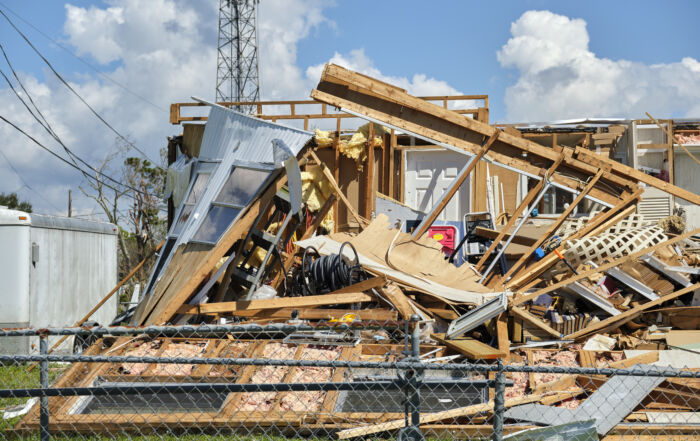Ensuring Food Safety in Emergency Foodservice Operations
As we were reminded earlier this month, emergencies can strike unexpectedly, whether due to natural disasters, health crises, or supply chain disruptions. Hurricane Helene, which impacted many parts of the Southeast was expected, but still had devastating effects on areas which were not necessarily expecting to be so hard hit. Thus, having a robust emergency preparedness plan is essential to safeguard your operation, protect your staff, and ensure the safety of your customers. In previous blogs, we’ve discussed the importance of developing an emergency plan and we even have a blog that provided some great resources. But, if you still haven’t created your emergency plan, now is the time to start!
Conduct a Risk Assessment
The first step in creating your plan is to identify potential risks specific to your operation. Some risks might include natural disasters, health emergencies, and other operational disruptions such as equipment failures, power outages, and staffing shortages.
By understanding which type of emergencies could affect your business, you can tailor your plan accordingly, developing ways to overcome these challenges.
…creating an emergency plan can be a lot of work….and I mean, a lot of work…it may seem overwhelming, but remember the adage, how do you eat an elephant? One bite at a time.
Establish an Emergency Response Team
Designate a team responsible for implementing the emergency plan. Some key stakeholders you’d want to have represented on your team include your management and key leadership who can make decisions and communicate with staff, staff members from various departments who can help with execution of the plan and provide much needed communication with staff across the operation, and safety officers or other individuals trained in health and safety protocols – these may be staff within your organization, or they may be external members who serve in these types of roles in the community. Whomever you select, be sure they clearly understand their roles and responsibilities during an emergency.
Develop Clear Procedures
Outline specific procedures for each type of emergency you determined might impact your foodservice operation in your risk assessment. Be sure to include evacuation plans, communication protocols, and food safety measures, including guidelines for food storage, handling, and preparation during emergencies, especially if power outages or supply disruptions occur.
Training and Drills
Once you have your plan developed, be sure to run through training and drills with staff members and your team. These are often essential for ensuring that staff are prepared to respond effectively. When training, be sure to cover the specific emergency procedures, and this may include evacuation routes, where to shelter in place, first aid protocols, and practices to protect the integrity of your food and water supply.
Mock drills should be held periodically throughout the year, not just once. The repeated practice will help staff become familiar with the plan and reduces panic in real situations.
Establish Supply Chain and Staffing Contingencies
A reliable supply chain is critical for foodservice operations. Plan for disruptions. If COVID and other recent natural disasters didn’t force you to do this, take some time to think through possibilities. Identify backup suppliers and determine how much of a small reserve for critical items you should maintain.
Create a Communication Plan
Effective communication is vital during emergencies. Develop a plan that includes both your internal and external stakeholders. Ensure all staff members know how to access emergency updates and who to contact for information. For external communication, preparing messages for customers about changes in service, safety measures, and any temporary closures will alleviate you having to do so when the emergency occurs and may give you a competitive advantage against other businesses. Transparency fosters trust and understanding with both internal and external stakeholders.
Review and Update Regularly
An emergency preparedness plan should be a living document that should evolve. Regularly review and update your plan to reflect and changes you’ve had in your operations or lessons you’ve learned after putting your plan in action.
I am not going to sugar coat it, creating an emergency plan can be a lot of work….and I mean, a lot of work. After you complete your risk assessment, it may seem overwhelming, but take it slow. Remember the adage, how do you eat an elephant? One bite at a time.
Creating an emergency preparedness plan for your foodservice operation is not just about compliance; it’s about ensuring the safety and well-being of your staff and customers while maintaining operational continuity. By assessing risks, establishing clear procedures, and training your team, you can navigate emergencies with confidence. A proactive approach to preparedness will not only safeguard your business but also enhance your reputation as a reliable and responsible foodservice provider. And, when the next disaster comes…and it will come someday, you will thank yourself for being prepared. Risk Nothing.
READ MORE POSTS
Ongoing Outbreaks: What We Can Learn from the Most Recent Carrot and Cucumber Outbreaks
Last month in our blog, we highlighted the recent E. Coli outbreak stemming from onions served [...]
The Hidden Dangers: Allergens in Your Foodservice Operation
It has been a while since we have addressed or discussed allergens in the blogs. In [...]
What Have We Already Learned from the Most Recent E. Coli Outbreak?
In late-September and peaking in very early-October, reports of increased Escherichia coli (E. coli) 0157:H7 cases [...]
Ensuring Food Safety in Emergency Foodservice Operations
As we were reminded earlier this month, emergencies can strike unexpectedly, whether due to natural disasters, [...]










